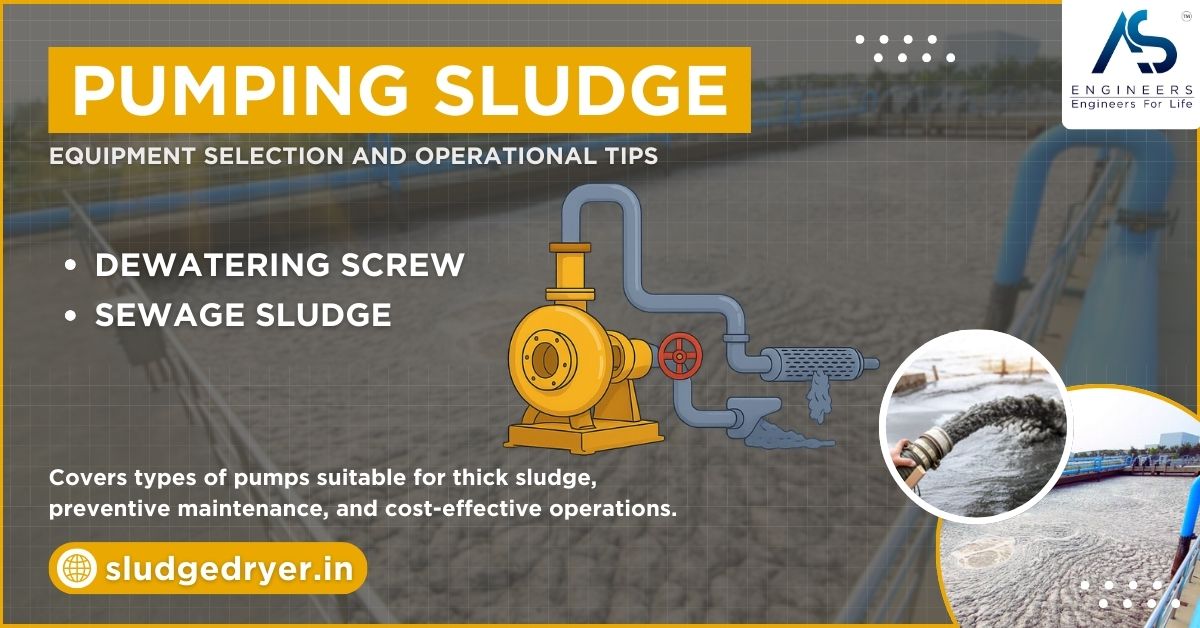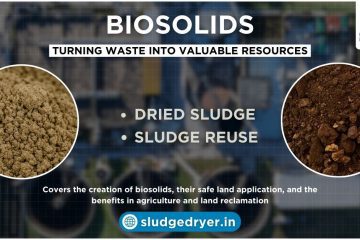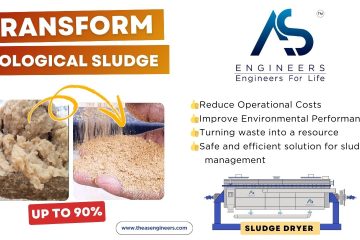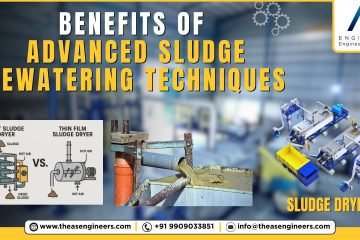Are you struggling with selecting the right equipment for pumping sludge in your wastewater treatment facility? With countless options available and high stakes for operational efficiency, making the wrong choice could cost your facility thousands in maintenance and downtime. The challenge of pumping sludge efficiently remains one of the most persistent headaches for plant operators worldwide. In this comprehensive guide, we’ll explore everything you need to know about pumping sludge effectively, from equipment selection to troubleshooting common issues that plague even experienced operators.
Pumping sludge efficiently requires specialized knowledge about viscosity, solids content, and equipment capabilities that many operators learn only through years of costly trial and error. Whether you’re managing municipal sewage sludge, industrial waste, or biosolids destined for agricultural applications, the right pumping solution can dramatically improve your operational efficiency while reducing maintenance costs and environmental risks.
Table of contents
- Understanding Sludge Characteristics: The Foundation of Effective Pumping
- Pump Technologies for Sludge Applications: Making the Right Choice
- System Design Considerations for Effective Sludge Pumping
- Maintenance Practices for Sludge Pumping Systems
- Energy Efficiency in Sludge Pumping Operations
- Advanced Technologies in Sludge Pumping
- Economic Considerations in Sludge Pumping Operations
- Case Studies: Successful Sludge Pumping Applications
- Conclusion: Mastering the Art and Science of Pumping Sludge
Understanding Sludge Characteristics: The Foundation of Effective Pumping
Before diving into equipment selection, it’s crucial to understand what makes sludge such a challenging material to pump. Unlike clean water, sludge presents several unique properties that directly impact pumping efficiency.
What Makes Sludge Different from Other Pumpable Materials?
Sludge is not merely dirty water—it’s a complex mixture of water and solids with properties that change based on source, treatment stage, and environmental conditions. The key characteristics that affect pumping sludge include:
- Solids Content: Typically ranging from 1% in primary sludge to over 30% in dewatered biosolids
- Viscosity: Often non-Newtonian, meaning viscosity changes under different pressure conditions
- Abrasiveness: Contains grit and particles that can wear down equipment
- Density: Usually between 1.0-1.4 g/cm³ depending on solids concentration
- Corrosiveness: Often contains chemicals that can damage pump components
Understanding these properties is essential because each directly influences pump selection and operational parameters. For instance, progressive cavity pumps excel with high-viscosity sludge but may struggle with abrasive materials that cause accelerated wear.
Common Types of Sludge and Their Pumping Challenges
Different types of sludge present unique pumping challenges:
Primary Sludge
Primary sludge, collected from primary clarifiers, contains large particles, fibrous materials, and can be highly variable in consistency. This variability makes pumping primary sludge particularly challenging, as equipment must handle sudden changes in viscosity and solids content.
Activated Sludge
With lower solids content (typically 0.5-2%), activated sludge is less challenging to pump than other types but requires equipment that can handle continuous operation without clogging or excessive wear.
Digested Sludge
After anaerobic digestion, sludge becomes more homogeneous but can contain corrosive compounds formed during the digestion process. Pumps handling digested sludge must resist chemical attack while maintaining efficiency.
Dewatered Sludge
Following mechanical dewatering through processes involving a dewatering screw or similar equipment, sludge can reach solids contents of 15-30%. At this stage, conventional centrifugal pumps become ineffective, necessitating specialized positive displacement equipment.
Pump Technologies for Sludge Applications: Making the Right Choice
Selecting the appropriate pump technology is perhaps the most crucial decision in establishing an efficient sludge handling system. Let’s examine the primary options and their suitability for different sludge applications.
Centrifugal Pumps: The Workhorses of Thin Sludge
Centrifugal pumps remain the most common choice for pumping low-viscosity sludge with solids content below 4%. They offer several advantages:
- High Flow Rates: Can move large volumes efficiently
- Lower Initial Cost: Generally less expensive than positive displacement alternatives
- Simplicity: Fewer moving parts means easier maintenance
- Variable Speed Operation: Can be adjusted to match flow requirements
However, they also come with significant limitations when dealing with thicker sludge:
- Efficiency Drops Rapidly: Performance decreases dramatically as viscosity increases
- Clogging Risk: Susceptible to blockages with fibrous materials
- Limited Suction Capability: Typically require flooded suction or priming systems
For sewage sludge in early treatment stages, non-clog centrifugal pumps with enlarged passages and specialized impellers offer reasonable performance while handling occasional solids.
Positive Displacement Pumps: Masters of High-Viscosity Sludge
When sludge viscosity increases, positive displacement pumps become the preferred solution. These pumps move a fixed volume of material with each cycle, making them ideal for thicker sludge:
Progressive Cavity Pumps
Progressive cavity pumps have become the gold standard for many sludge applications due to their versatility across viscosity ranges. Their design consists of a helical rotor turning within a flexible stator, creating cavities that move the sludge from inlet to outlet.
Key advantages include:
- Handles High Viscosity: Effective with sludge up to 40% solids content
- Gentle Pumping Action: Minimizes shear forces that could change sludge characteristics
- Self-Priming: Can create strong suction lift
- Steady Flow: Minimal pulsation regardless of pressure variations
The main drawbacks center around maintenance requirements:
- Stator Wear: The elastomeric stator degrades over time, especially with abrasive sludge
- Run-Dry Damage: Can fail catastrophically if allowed to run dry
- Higher Initial Cost: More expensive than centrifugal alternatives
Rotary Lobe Pumps
Rotary lobe pumps offer another positive displacement option for thicker sludge applications:
- Excellent for Shear-Sensitive Materials: Maintains sludge properties during transfer
- Bidirectional Operation: Can pump in either direction
- Good Solids Handling: Passes large solids with minimal damage
- Accessible Maintenance: Easy access to wearing parts without disconnecting piping
Their limitations include higher initial cost and potential for wear with abrasive materials.
Peristaltic Pumps
For highly corrosive or abrasive sludge, peristaltic pumps offer unique advantages:
- Complete Fluid Isolation: Sludge contacts only the inner hose
- Excellent Corrosion Resistance: Ideal for chemically aggressive sludge
- Superior Dry-Running Capability: Can run dry without damage
- Self-Priming: Excellent suction lift capability
Their primary disadvantages include higher maintenance costs related to hose replacement and limitations on pressure ratings compared to other positive displacement technologies.
Air-Operated Diaphragm Pumps: Versatility in Challenging Environments
Air-operated diaphragm pumps offer unique capabilities for certain sludge applications:
- Intrinsically Safe Operation: No electrical components make them suitable for hazardous locations
- Excellent Solids Handling: Pass large solids without damage
- Infinite Adjustment: Flow can be finely controlled through air supply
- Run-Dry Capability: No damage occurs when running dry
Their main limitations include lower efficiency compared to electric-driven alternatives and pulsating flow that may require dampeners for sensitive applications.
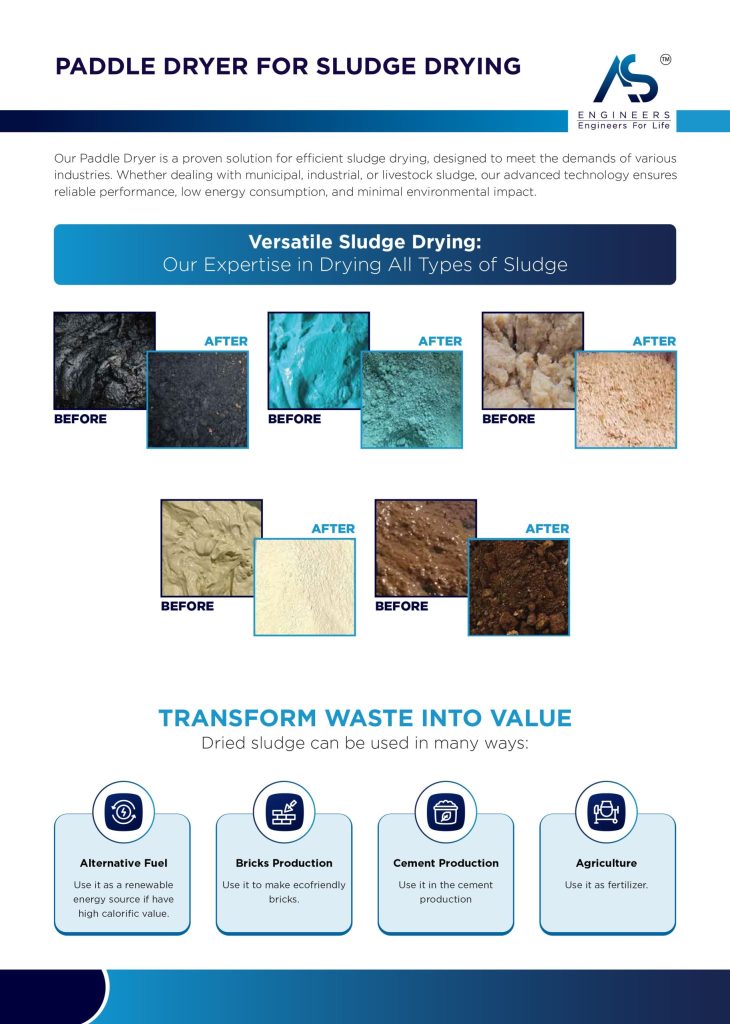
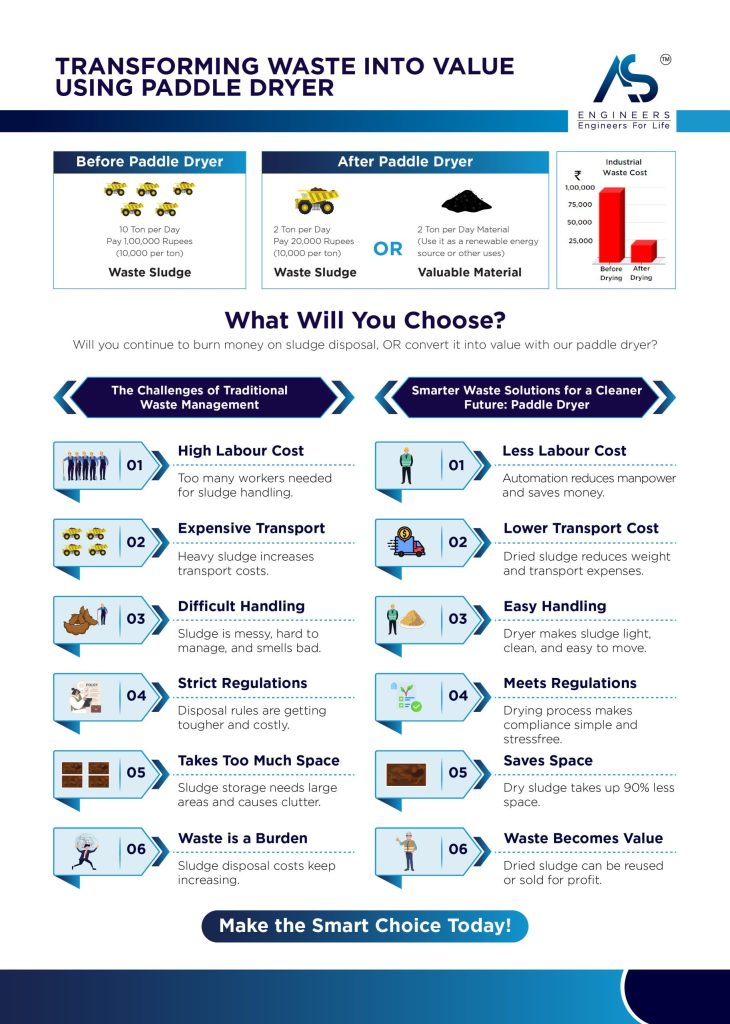
System Design Considerations for Effective Sludge Pumping
Selecting the right pump is only part of the equation—the entire system must be designed to accommodate sludge’s unique properties.
Piping Configuration and Materials
Proper piping design can prevent many common pumping problems:
- Minimize Changes in Direction: Each bend increases friction losses substantially
- Select Appropriate Pipe Diameter: Oversized pipes reduce velocity and can lead to settling
- Use Long-Radius Elbows: Reduces friction losses and wear at direction changes
- Install Cleanouts: Strategic access points allow for clearing blockages
- Choose Appropriate Materials: Abrasion-resistant options like HDPE or lined steel extend system life
For high-solids sludge, maintain velocities between 3-5 feet per second to prevent settling while avoiding excessive friction losses.
Instrumentation and Monitoring
Modern sludge pumping systems benefit tremendously from appropriate instrumentation:
- Flow Meters: Magnetic flow meters offer reliable measurement without internal obstructions
- Pressure Sensors: Monitor system pressure to detect clogs or pump issues
- Level Controls: Prevent dry running and overflow conditions
- Viscosity Monitors: Provide real-time data on sludge properties
- Temperature Sensors: Alert to potential overheating conditions
Integrating these instruments into a SCADA system allows for comprehensive monitoring and trend analysis that can predict problems before they occur.
Pump Protection Strategies
Protecting pumps from damage requires specific strategies for sludge applications:
- Strainers and Screens: Remove oversized materials before they reach the pump
- Grinders: Break down fibrous materials that could wrap around impellers
- Vibration Monitoring: Detect bearing wear and impending failures
- Dry-Run Protection: Prevent catastrophic failures if sludge supply is interrupted
- VFD Control: Adjust speed to match system requirements and protect against pressure spikes
These protective measures significantly extend pump life while reducing maintenance costs and unexpected downtime.
Maintenance Practices for Sludge Pumping Systems
Even the best-designed systems require regular maintenance to perform optimally with challenging materials like sludge.
Preventive Maintenance Schedules
Effective maintenance for sludge pumps should be scheduled based on:
- Run Hours: Tracking operational time provides the best indicator for service intervals
- Performance Metrics: Changes in flow, pressure, or power consumption often signal impending issues
- Manufacturer Recommendations: Follow OEM guidelines for specific components
- Historical Data: Past failure patterns help predict maintenance needs
A typical preventive maintenance schedule might include:
- Daily: Visual inspection, check operating temperatures and pressures
- Weekly: Lubrication checks, packing adjustment
- Monthly: Vibration analysis, performance testing
- Quarterly: Component inspection, alignment verification
- Annually: Complete teardown and rebuild as needed
Common Failure Points and Solutions
Understanding typical failure modes helps prioritize maintenance activities:
Seal Failures
Mechanical seals often fail prematurely in sludge applications due to abrasive particles. Solutions include:
- Installing seal water flush systems to keep abrasives away from seal faces
- Selecting harder seal materials like silicon carbide or tungsten carbide
- Installing cyclone separators to remove abrasives from seal flush water
Bearing Issues
Bearings frequently fail due to contamination or improper lubrication. Protective measures include:
- Using sealed bearings where appropriate
- Installing bearing isolators to prevent contamination
- Implementing oil analysis programs to detect early wear indicators
- Ensuring proper alignment to prevent excess bearing loads
Impeller/Rotor Wear
Contact with abrasive sludge rapidly degrades pump internals. Strategies to extend component life include:
- Selecting wear-resistant materials like hardened stainless steel or elastomer-coated components
- Implementing velocity control to minimize erosive effects
- Installing sacrificial wear plates that can be replaced during routine maintenance
Troubleshooting Common Pumping Problems
When issues arise, systematic troubleshooting saves time and resources:
Reduced Flow
When flow decreases, check for:
- Partially clogged suction strainer
- Increased sludge viscosity
- Worn pump components
- Air entrainment in the suction line
- Incorrect speed settings on VFD
Excessive Power Consumption
Higher than normal power draw often indicates:
- Excessive system pressure
- Mechanical binding within the pump
- Higher than design sludge viscosity
- Improper impeller trimming
- Misalignment between pump and driver
Noise and Vibration
Unusual noise or vibration typically signals:
- Cavitation due to insufficient NPSH
- Bearing failure
- Improper foundation or mounting
- Resonance within the system
- Damaged coupling or misalignment
Energy Efficiency in Sludge Pumping Operations
With energy costs representing a significant portion of operational expenses, efficiency improvements offer substantial savings opportunities.
Optimizing Pump Selection for Efficiency
Energy-efficient pumping starts with proper sizing:
- Avoid Oversizing: Select pumps that operate near their best efficiency point
- Consider Variable Loads: Evaluate the entire operating range, not just the design point
- Multiple Smaller Units: Often more efficient than one large pump for variable demand
- High-Efficiency Motors: Premium efficiency motors typically pay for themselves quickly
- Right Technology: Match pump type to application (e.g., progressive cavity for high-viscosity sludge)
An efficiency-focused approach might mean higher initial costs but typically delivers substantial lifetime savings.
VFD Applications and Benefits
Variable frequency drives offer particular benefits for sludge pumping systems:
- Match Output to Demand: Adjust speed to provide only what the system requires
- Soft Starting: Reduce mechanical stress and power surges during startup
- Process Control: Maintain precise flow rates regardless of sludge variations
- Energy Savings: Power consumption decreases with the cube of speed reduction
- Extended Equipment Life: Lower operational speeds reduce wear and mechanical stress
Most sludge applications see 20-50% energy savings after VFD implementation, with payback periods often under 24 months.
Hydraulic Design Optimization
Beyond the pump itself, system hydraulics significantly impact energy consumption:
- Minimize Static Head: Lower lift requirements whenever possible
- Reduce Friction Losses: Properly sized pipes and minimal direction changes
- Parallel Operation: Configure multiple pumps to operate in their efficient ranges
- Eliminate Throttling: Use speed control rather than discharge restriction
- Regular System Cleaning: Prevent buildup that increases friction losses
These hydraulic optimizations often deliver energy savings comparable to pump upgrades at fraction of the cost.
Advanced Technologies in Sludge Pumping
The sludge pumping landscape continues to evolve with technological advances that address longstanding challenges.
Smart Pumping Systems
Modern sludge handling benefits from intelligent control systems:
- Real-Time Viscosity Measurement: Automatically adjusts pump parameters based on sludge properties
- Predictive Maintenance: Machine learning algorithms predict failures before they occur
- Remote Monitoring: Cloud-based oversight allows expert analysis from anywhere
- Automatic System Balancing: Optimizes multiple pump operations for maximum efficiency
- Performance Analytics: Identifies opportunities for system improvements
These smart systems can reduce energy consumption by 15-30% while extending equipment life through optimized operation.
Innovations in Pump Design
Recent innovations specifically targeting sludge applications include:
- Non-Contacting Spiral Technology: Eliminates stator wear in progressive cavity pumps
- Advanced Composite Materials: Offers superior abrasion resistance with lighter weight
- Sealless Magnetic Drive: Eliminates mechanical seals entirely for challenging applications
- Integrated Grinding: Combines size reduction with pumping action
- 3D-Printed Components: Custom geometries optimize flow paths for specific sludge types
These technologies address traditional pain points in sludge pumping, offering improved reliability and reduced maintenance requirements.
Integration with Dewatering Systems
Modern facilities increasingly integrate pumping and dewatering for optimized performance:
- Direct Coupling: Pumps matched to dewatering screw press input requirements
- Feedback Control: Dewatering performance metrics adjust upstream pumping parameters
- Inline Conditioning: Chemical dosing integrated with pumping systems
- Heat Recovery: Captures energy from pump systems to improve dewatering efficiency
- Closed-Loop Control: Maintains optimal solids content throughout the process
This systems approach improves overall performance while reducing operational costs and chemical consumption.
Economic Considerations in Sludge Pumping Operations
Making financially sound decisions requires comprehensive analysis of both initial and lifecycle costs.
Life Cycle Cost Analysis
Proper economic evaluation extends far beyond purchase price:
- Initial Investment: Equipment, installation, commissioning, and training
- Energy Costs: Often the largest component of lifetime expense
- Maintenance Expenses: Labor, parts, and downtime costs
- Reliability Factors: Cost of unexpected failures and production losses
- End-of-Life Considerations: Disposal, decommissioning, and replacement costs
For typical sludge applications, purchase price represents only 5-15% of total lifecycle costs, making operational efficiency far more impactful than initial savings.
ROI Calculation for System Upgrades
When evaluating upgrades to existing systems, ROI analysis should include:
- Energy Savings: Quantify reduced consumption with more efficient equipment
- Maintenance Reduction: Calculate savings from fewer repairs and longer intervals
- Downtime Avoidance: Estimate value of improved reliability
- Labor Optimization: Less attention required from operations staff
- Chemical Savings: Improved processes often reduce treatment chemical needs
Most sludge pumping system upgrades deliver complete ROI within 2-4 years, with energy-focused improvements often paying back even faster.
Budgeting for Replacement and Spare Parts
Strategic parts management keeps operations running smoothly:
- Critical Spares Inventory: Maintain on-site stock of vital components
- Standardization: Limit variety of pump models to reduce inventory requirements
- Rebuild Programs: Consider component refurbishment rather than complete replacement
- Vendor Partnerships: Negotiate stocking agreements with suppliers
- Condition-Based Replacement: Replace components based on monitoring rather than fixed schedules
Effective spare parts management typically reduces total maintenance costs by 15-25% while improving system availability.
Case Studies: Successful Sludge Pumping Applications
Learning from real-world examples provides valuable insights for your own operations.
Municipal Wastewater Treatment Plant Optimization
A mid-sized municipal plant facing reliability issues with primary sludge transfer implemented several changes:
- Replaced aging centrifugal pumps with progressive cavity units
- Installed VFDs with automatic viscosity compensation
- Implemented comprehensive preventive maintenance program
- Added inline grinding upstream of pumping stations
Results included:
- 43% reduction in energy consumption
- 67% decrease in maintenance costs
- Near-elimination of clogging incidents
- Payback period of 19 months on total investment
Industrial Sludge Handling Challenges
A food processing facility struggling with highly variable waste sludge found success through:
- Installing rotary lobe pumps with hardened internals
- Implementing real-time monitoring of solids content
- Adding buffer tanks to normalize sludge characteristics
- Creating separate handling streams for different sludge types
The improvements yielded:
- 85% reduction in pump-related downtime
- 52% decrease in parts consumption
- Significant extension of pump service life
- Improved dewatering performance downstream
Agricultural Biosolids Application
A biosolids land application program overcame transportation challenges by:
- Selecting high-pressure progressive cavity pumps for transfer duties
- Installing abrasion-resistant piping systems
- Implementing sophisticated control systems to maintain optimal solids content
- Developing custom maintenance protocols for seasonal operation
Benefits realized included:
- Reduced transportation costs through higher solids content
- Eliminated road damage from heavy truck traffic
- Improved application uniformity and nutrient management
- Enhanced community acceptance through reduced odor and traffic
Conclusion: Mastering the Art and Science of Pumping Sludge
Effective sludge pumping represents the perfect intersection of technical knowledge, practical experience, and strategic planning. By understanding the unique properties of your specific sludge and selecting appropriate technologies, you can create systems that operate reliably while minimizing energy consumption and maintenance requirements.
Remember that pumping sludge successfully requires more than just selecting the right equipment—it demands systematic approaches to design, operation, and maintenance. The most successful operations view their sludge handling systems holistically, considering how each component interacts with others and how operational decisions impact long-term performance.
Whether you’re managing sewage sludge in a municipal facility, dealing with industrial waste streams, or handling agricultural biosolids, applying the principles outlined in this guide will help you overcome common challenges while optimizing operational efficiency. The result? Lower costs, reduced downtime, and more sustainable operations for your facility.
Have you implemented any of these strategies at your facility? What challenges are you currently facing with pumping sludge? Share your experiences in the comments below or contact us directly for personalized assistance with your specific sludge pumping challenges.

